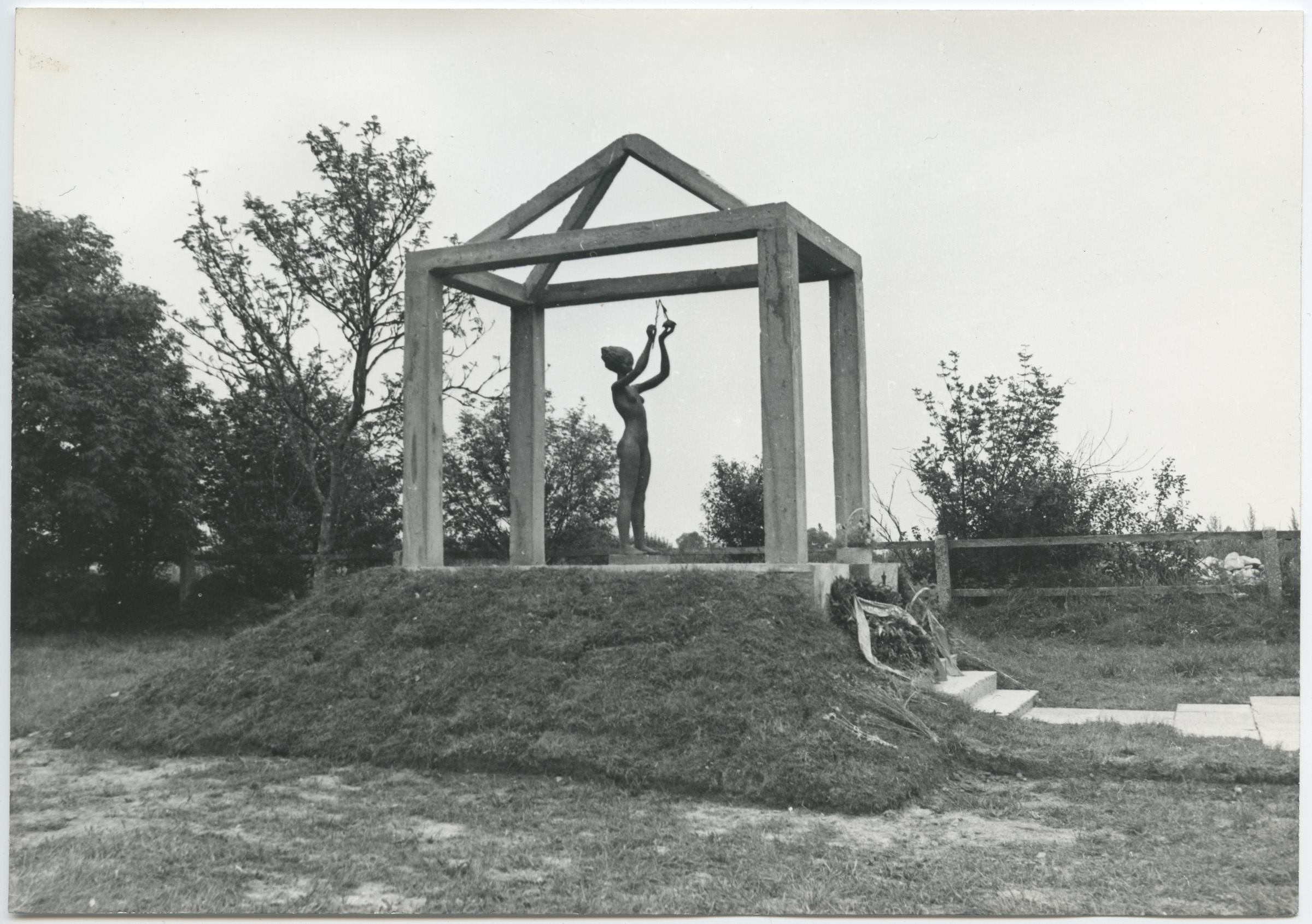Monument to the Lives Lost in the Second World War, Tornimäe New Cemetery
Year of completion: 1984
Address: Saare County, Tornimäe village
Author Ülo Õun
Bronze, granite foundation, concrete architectonic structure
The cemetery as a whole is under conservation (monument no. 4159), the memorial itself is not an individual cultural monument
The Tornimäe cemetery in Pöide parish, Saaremaa is home to a mass grave commemorating the gruesome battles of the Second World War. The centre of the memorial constructed onto the gravesite in 1984 is Ülo Õun’s bronze sculpture: the nude figure of a young woman holds a broken rose in her outstretched hands. The beautiful young woman with the symbol of a terminated journey, especially as a nude figure, is exceptional among war monuments of the time. Even if a female figure was chosen for a monument dedicated to the fallen, it was generally a mourning mother-figure, or sometimes mother-land in the Russian cultural context. The approach taken with the monument’s architectonic structure is worthy of attention as well. The delicate female figure standing on a massive grey marble platform is surrounded by a geometric structure of four concrete pillars, connecting into an aerial pyramid-like shape, symbolising a chapel. I have searched for the name of the architect but to no avail. It is possible that the structure surrounding the figure was designed by the sculptor himself.
The war memorial, which has remained practically unknown to this day, has the effect of a very unified combination in its frailness. The choice of motif, undoubtedly seeming unexpected at the time, and the innovative architectural approach should be reproduced in higher volume today as well. But the road leading to the monument is overgrown and barely noticeable.
In a recent conversation with cultural historian Olavi Pesti, we reminisced over the highly artistically valuable war monuments constructed in Germany throughout the span of a decade from the seventies until the mid-eighties. Although some of the monuments constructed already in the seventies served the occupational regime’s ideology, the artists (Matti Varik, Riho Kuld, Edgar Viies and others) had managed to renew and update the Estonian monumental sculpture scene with their innovation in form. The decision-makers at the time were Saaremaa party secretary Jüri Suurhans and Kuressaare-born artist Ilmar Torn who had served in the Estonian Rifle Corps by a twist of fate. Ülo Õun’s thoroughly subjective creative idea was only expressed in the form of monumental sculpture in a few individual cases. The approach of the Tornimäe monument is one of the most remarkable examples of his later works.
Juta Kivimäe







